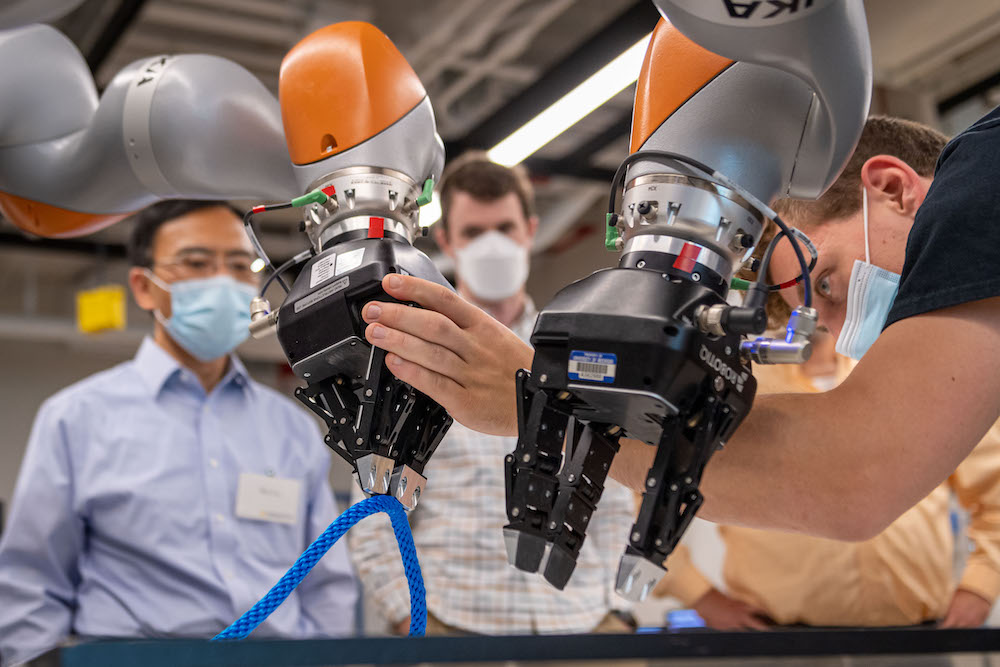Robotic manipulation

How can robots successfully interact with the physical world? The Autonomous Robotic Manipulation (ARM) Lab and the Manipulation and Machine Intelligence (MMint) Lab work on developing models and algorithms that allow robots to plan for physical interaction with their environments and manipulate objects–even notoriously difficult to model soft objects like cloth or rope. Their goal is to develop methods that enable robots to interact with any sort of environment, even ones that the robot has never encountered previously. Their research addresses questions such as: What happens when the robot moves an object? How can the robot sense the effect of its action on an object? How can the robot use its visual and tactile feedback for reasoning and what inspiration can we take from humans?
How can robots successfully interact with the physical world, grab a cup, fold clothes, or play Jenga? Graduate students Peter Mitrano and Andrea Sipos fill us in.
Hi. My name is Peter Mitrano.
And my name is Andrea Sipos.
We're here to tell you about robotic manipulation at the University of Michigan. I work in the lab studying manipulation of deformable objects. To form objects are things like cloth rope wires, plants, food. As a part of my Ph.D., I've developed several algorithms that enable robots to efficiently learn how to manipulate these kinds of objects. This work has potential applications in manufacturing, agriculture and home robots.
Manipulation is an interesting field, in part because most humans find it very easy. It may be surprising to find out how hard it is to program robots to do tasks like folding towels, stirring a pot or soldering wires. The gap between robots and humans in manipulation is huge, and trying to close that gap is a fun challenge.
I do research in the manipulation and machine intelligence lab or MMint for short. In our lab, we enable robots interact with the world purposefully and intelligently. By creating algorithms that reason over vision and touch. You'll see our robots holding a variety of tools, such as spatulas for cooking and textiles for assembly. We use different vision and touch sensors to gather multimodal data and reason over it, using both analytical and machine learning methods. We hope to allow robots to complete high level tasks like flipping a pancake or tightening a screw.
Being a graduate student is all about finding community and balance. The robotics department at the University of Michigan is a place where diverse identities are welcomed and celebrated and creative problem solving is embraced. We make connections in and out of labs and classrooms with our peers and work hard to develop a culture of respect and support.
Grad school is no walk in the park, but being surrounded by incredible people makes it much easier.
